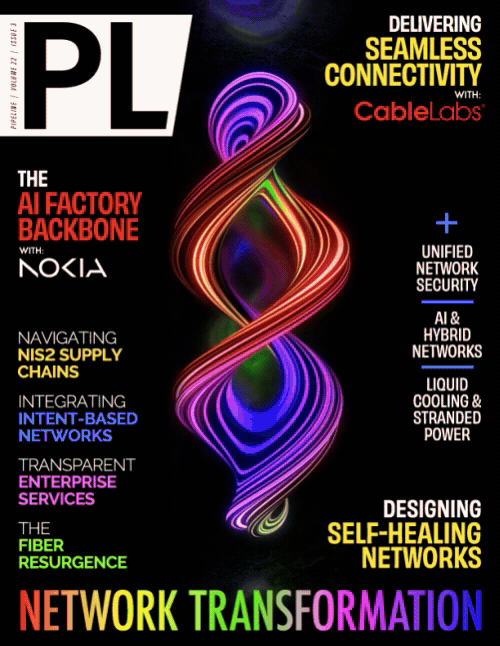FirstNet and AT&T Announce ExpansionFirstNet Expands, Now Covers More Than 2.71 Million Square Miles
FirstNet®, America’s public safety network, now covers more than 2.71 million square miles. As public safety’s network partner, AT&T* has moved quickly to bring more coverage, boost capacity and drive new capabilities for first responders and the communities they serve – rural, urban and tribal. In 2020, we added nearly 100,000 square miles to the FirstNet coverage footprint (that’s like covering the entire state of Oregon). Today, more than 15,000 agencies and organizations – accounting for more than 2 million connections nationwide – have subscribed to FirstNet. As FirstNet grows, more public safety agencies are turning to their network. Recent agencies to sign on to FirstNet include Los Angeles Police Department, the third-largest municipal police department in the United States, which is connecting thousands of law enforcement officers and emergency personnel with FirstNet for the priority communications they require; and the City of Cambridge, part of the Boston metropolitan area, will equip its police, fire, EMS and other first responders with FirstNet, giving them the superior coverage for day-to-day response and life-saving missions. Why is this important? FirstNet already covers more than 99% of the U.S. population today. But we aren’t stopping there. FirstNet is built for all public safety. That means every first responder – career or volunteer; federal, tribal, state or local; urban, suburban or rural. We’re actively extending the nationwide reach of FirstNet to give agencies large and small the reliable, unthrottled connectivity and modern communications tools they require – every day and in every emergency. These new agencies subscribing to FirstNet, as well as others like the FBI and the U.S. Army, are a testament to the unparalleled capabilities first responders can only get on the network built specifically for them. Because no connection is more important than one that could help save a life. How is AT&T expanding the FirstNet network footprint? With FirstNet, it’s about where first responders need connectivity. That’s why the build is being done with direct feedback from public safety and local stakeholders. It's bringing public safety communications into the 21st century with new, innovative capabilities to strengthen first responders' incident response. The build is being carried out in several ways:
We’re also taking further action to increase network resiliency for today’s changing environment. From hurricanes and wildfires to the most recent unprecedented winter storms hammering the South, we are committed to providing public safety with a network that’s second to none in any emergency. Today, more than 98% of the population is covered by cell sites with permanent backup power solutions, but we aren’t stopping there. As we build new cell sites, we’re including fixed generators whenever possible and are committed to growing our fixed generator support on existing infrastructure. For places where a permanent backup power solution isn’t possible, that’s where FirstNet Response Operations and AT&T Network Disaster Recovery steps in bringing extended battery life and portable power generators as needed. These resiliency measures will ultimately help first responders to operate faster, safer and more effectively when lives are on the line. What are the benefits to first responders? Expanding FirstNet coverage to more areas of the country is expanding first responders’ access to mission-critical capabilities they can’t get anywhere else – innovative solutions like FirstNet Push-to-Talk, Compact Rapid Deployables™ and Z-Axis capabilities. Plus, the FirstNet device and app ecosystem now has more than 210 FirstNet Ready™ devices and over 160 highly secure apps tested specifically for public safety’s use in the FirstNet App Catalog. Today, FirstNet is solving for common and long-standing communications challenges that first responders face - things like interoperability, network congestion and commercial network providers slowing public safety’s data connection. While commercial wireless offerings remain available to public safety, FirstNet continues to grow because it offers distinct advantages from those commercial offerings. FirstNet comes with unique features, functionality and dedicated spectrum when needed for the public safety community. That’s why public safety fought for their own, separate, dedicated platform, championing the vision that led to the creation of FirstNet. How does this benefit our local communities? The FirstNet network expansion is one way AT&T is helping to bridge the rural-urban digital divide to help ensure all of public safety – and the communities they serve – have access to critical connectivity to help meet the urgent challenges of today and tomorrow. This new infrastructure will also help improve the overall coverage and network capacity experience for AT&T wireless customers in the area. Residents, visitors and businesses can take advantage of the AT&T commercial spectrum bands, as well as Band 14 when additional capacity is available. What is FirstNet? FirstNet is the only nationwide, high-speed broadband communications platform dedicated to and purpose-built for America’s first responders and the extended public safety community. Shaped by the vision of Congress and the first responder community following the 9/11 terrorist attacks, FirstNet stands above commercial offerings. It is built with AT&T in public-private partnership with the First Responder Network Authority (FirstNet Authority) – an independent agency within the federal government. The FirstNet network is providing public safety with truly dedicated coverage and capacity when they need it, unique benefits like always-on priority and preemption, and high-quality Band 14 spectrum. These advanced capabilities enable FirstNet to help fire, EMS, law enforcement save lives and protect their communities. Source: AT&T media announcement | |

















